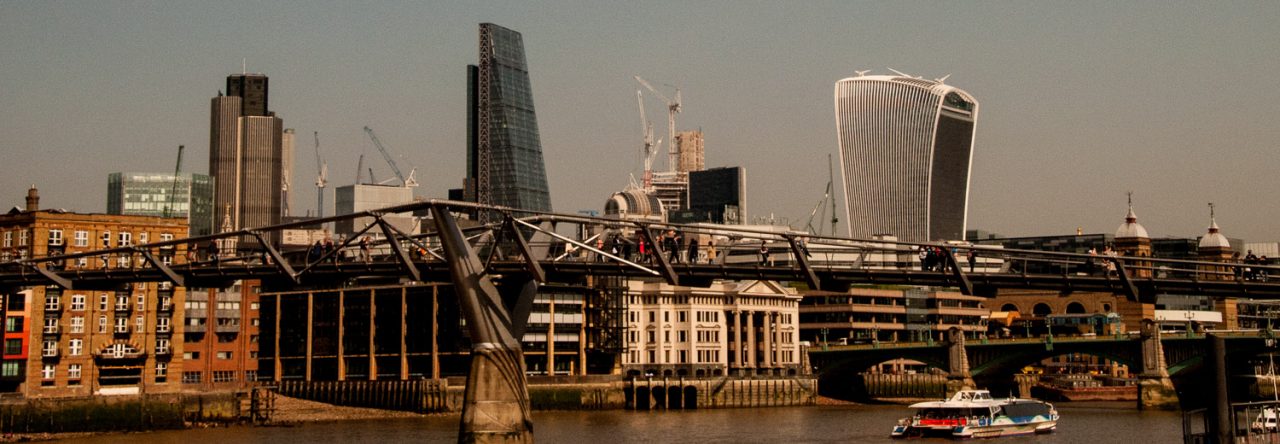Situated in the centre of the City of London’s financial district, the current Grade II listed Market building, designed by Horace Jones, dates back to 1881. Its airy and light wrought iron and glass structure replaced the stone market previously created by Lord Mayor of London, Dick Whittington in the 15th Century. The ‘old’ market before demolition …
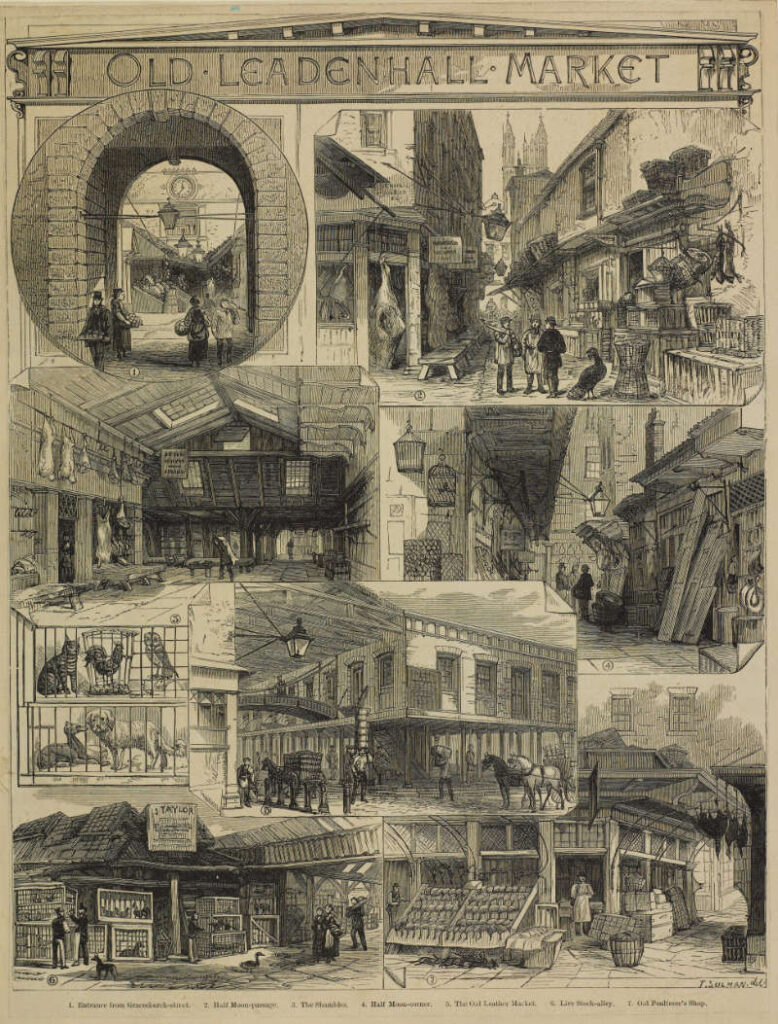
It now offers a spectacular Victorian setting with the roof, cobbles and buildings preserved. Crowning the many entrances are elaborate stone pediments carved with dragons, swags, shields and other devices, with a particular emphasis on City heraldry …
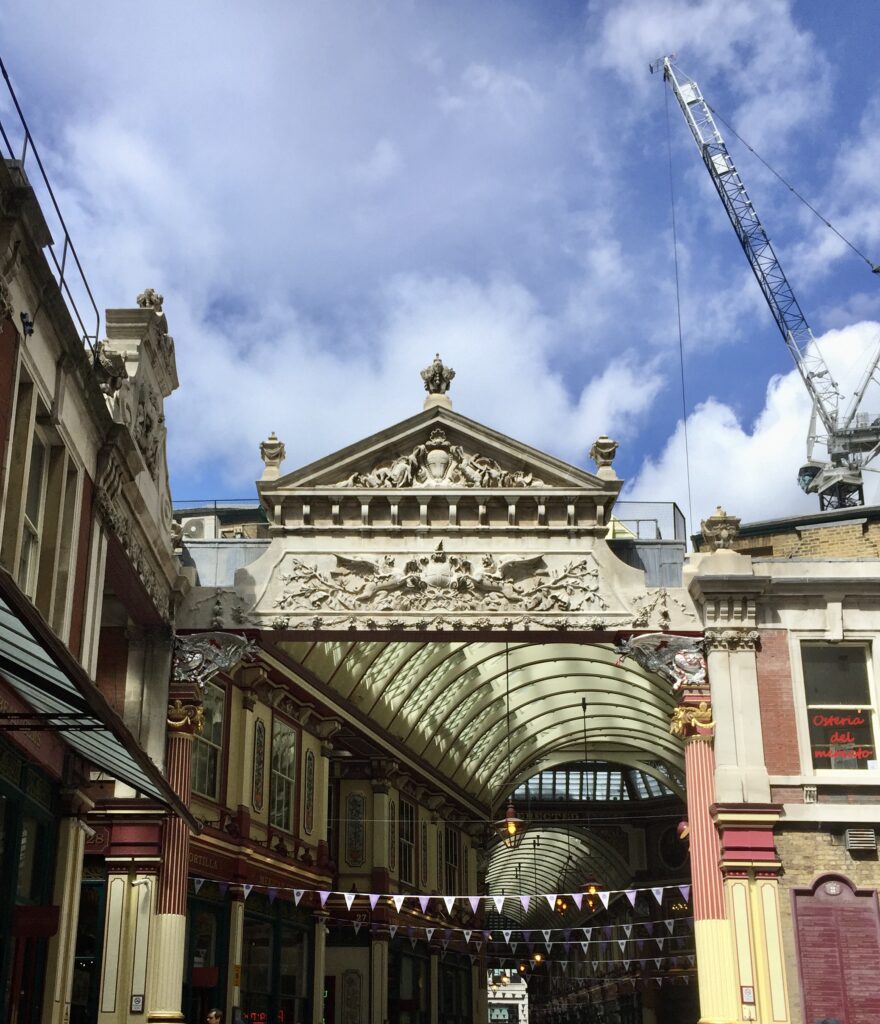
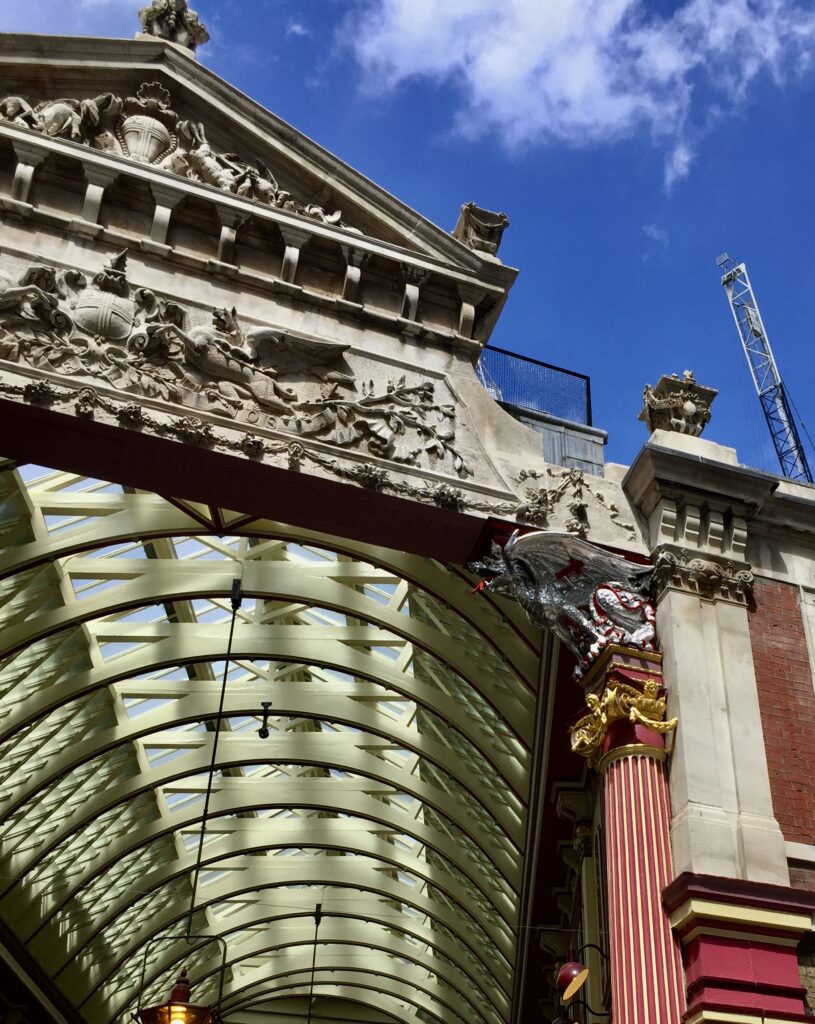
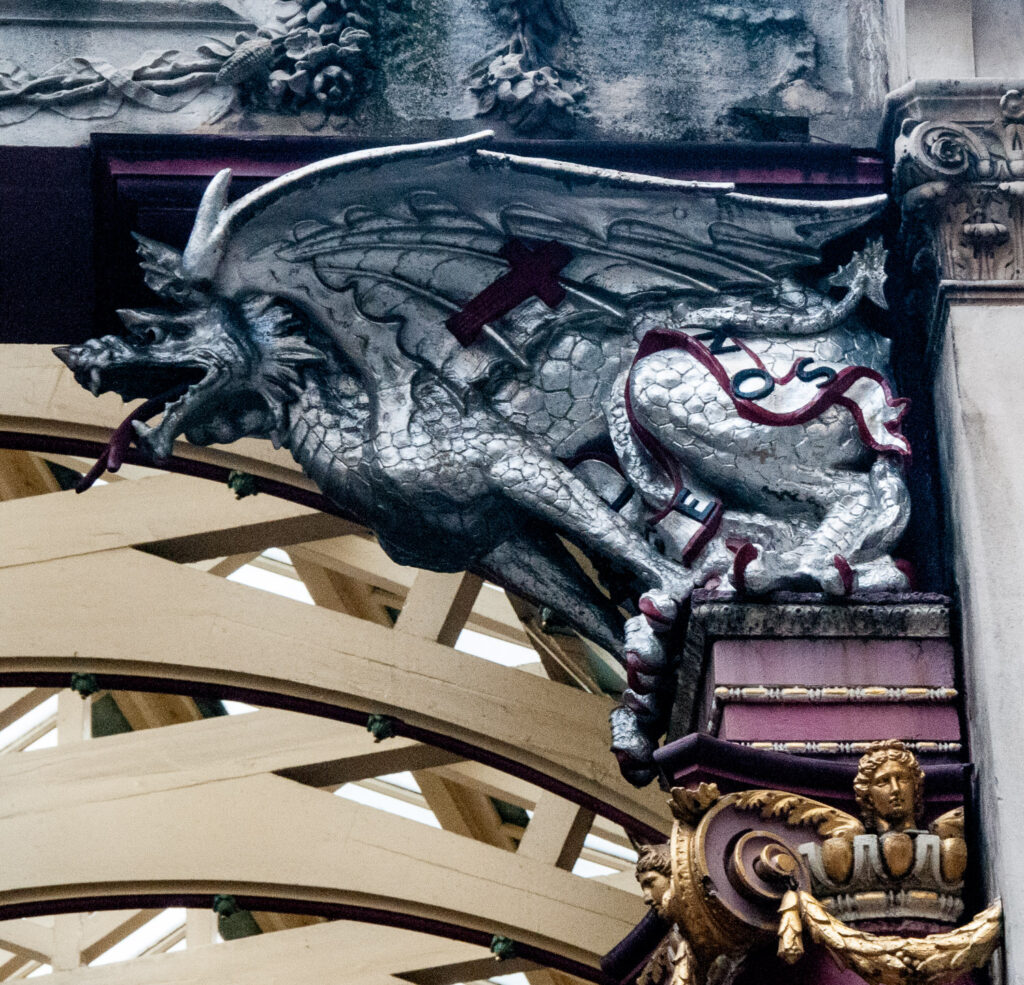
I have written about the City dragon emblem before in Dragons and Maidens.
It’s a very convivial place at lunchtime, especially popular with workers from nearby Lloyd’s …
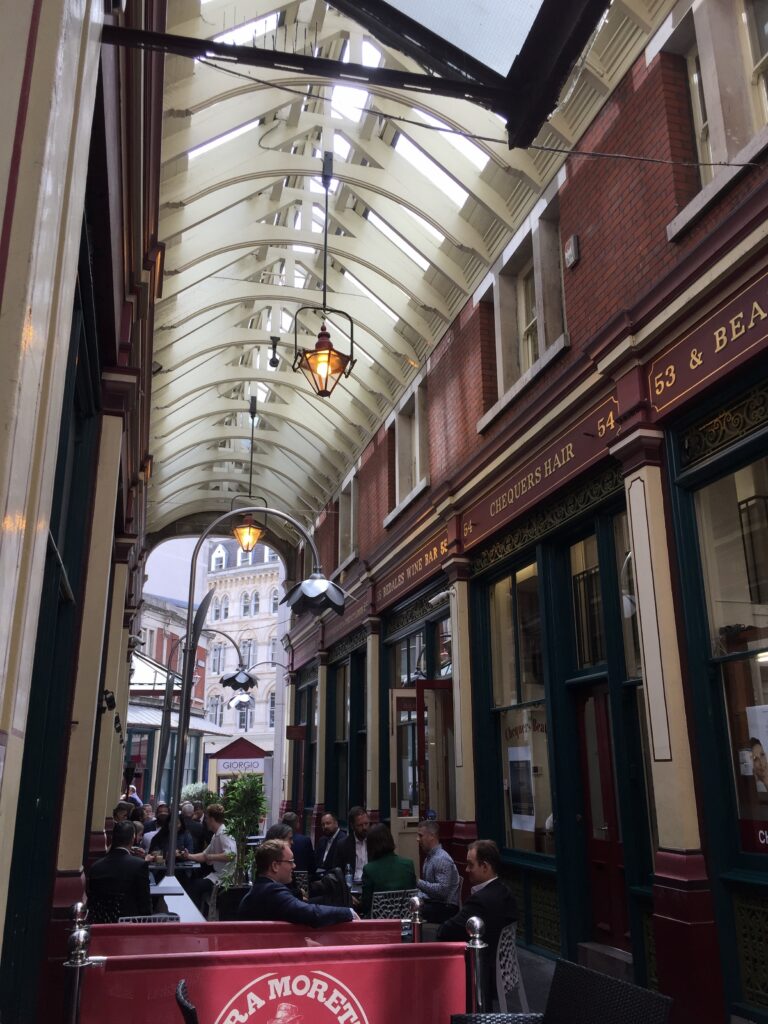
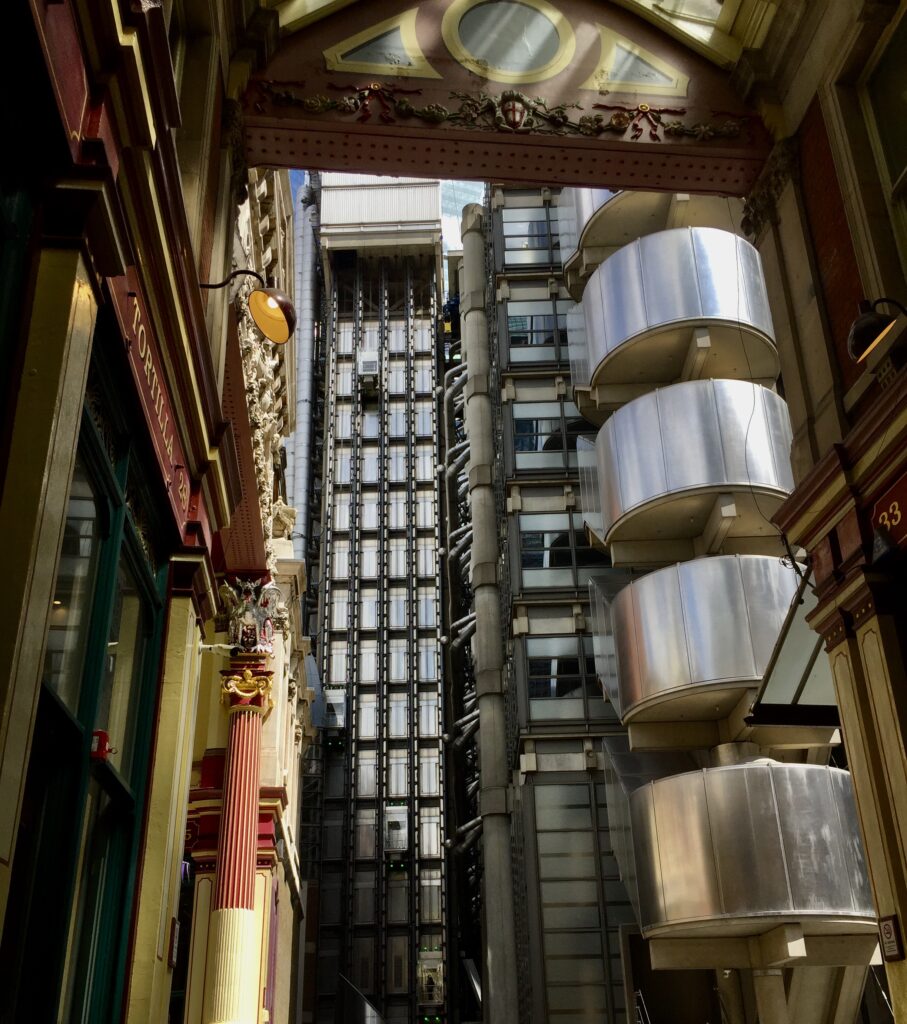
New buildings are still springing up despite the reported trend for more hot-desking and part-time commuting …
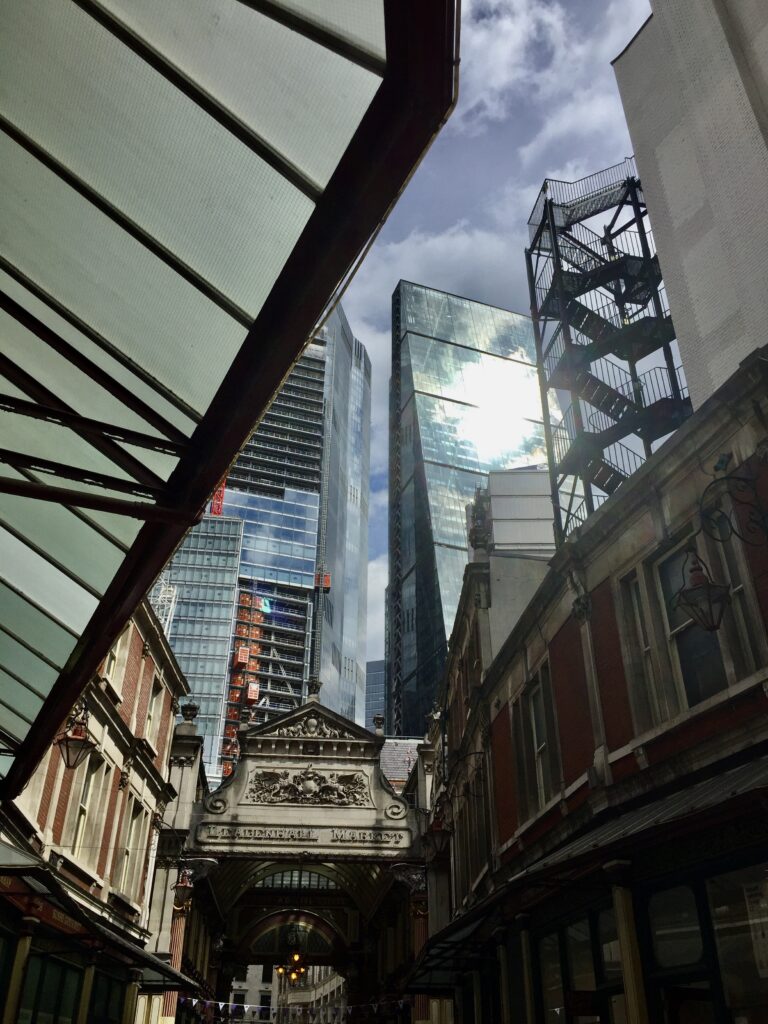
This exhibit, from the Sculpture in the City programme, is entitled symbols by Guillaume Vandame …
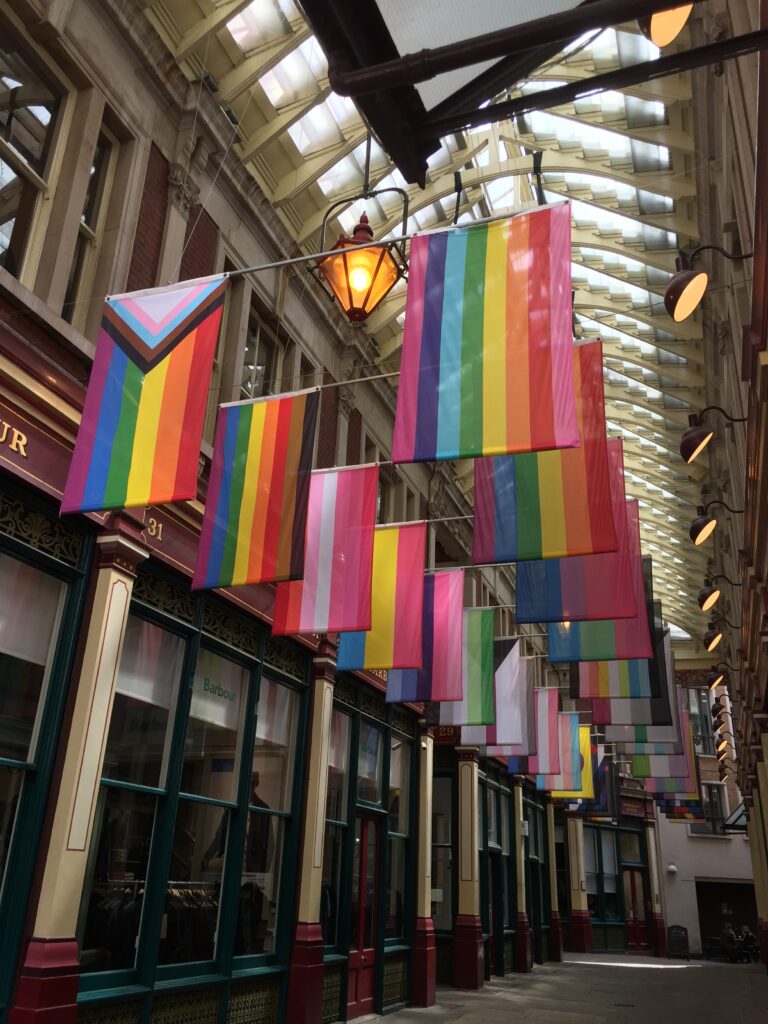
A tasteful celebration of the Jubilee …
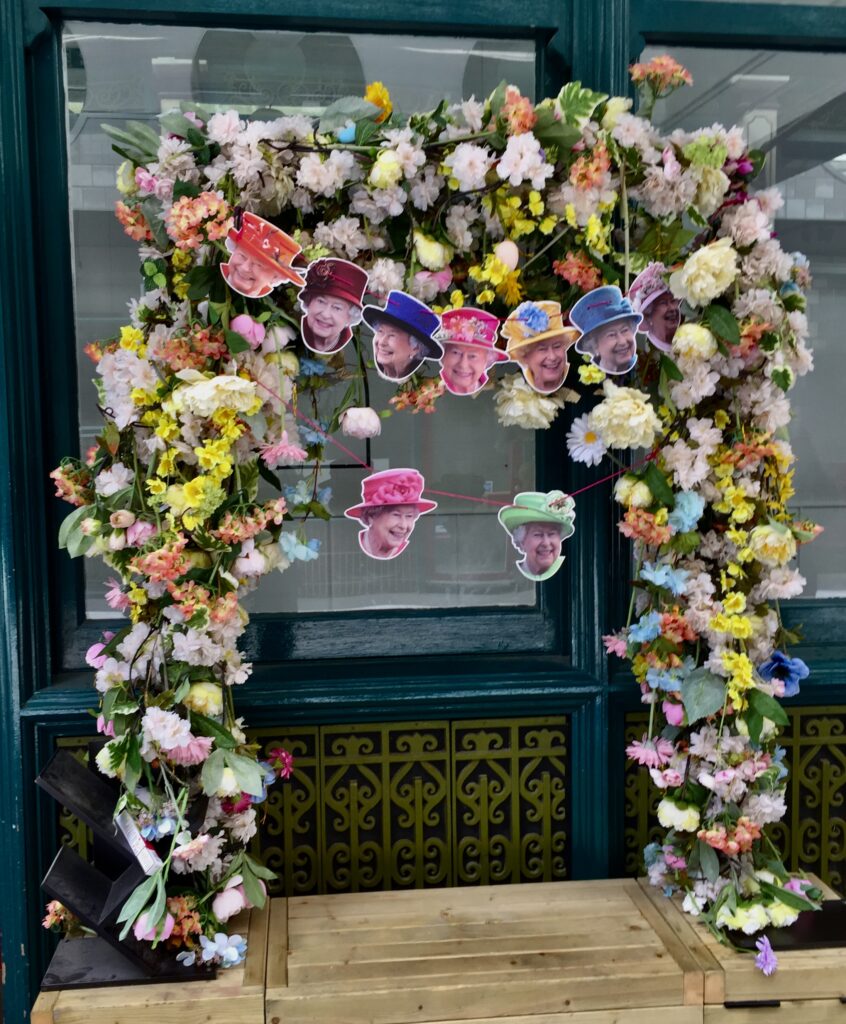
What is this bar’s name all about?
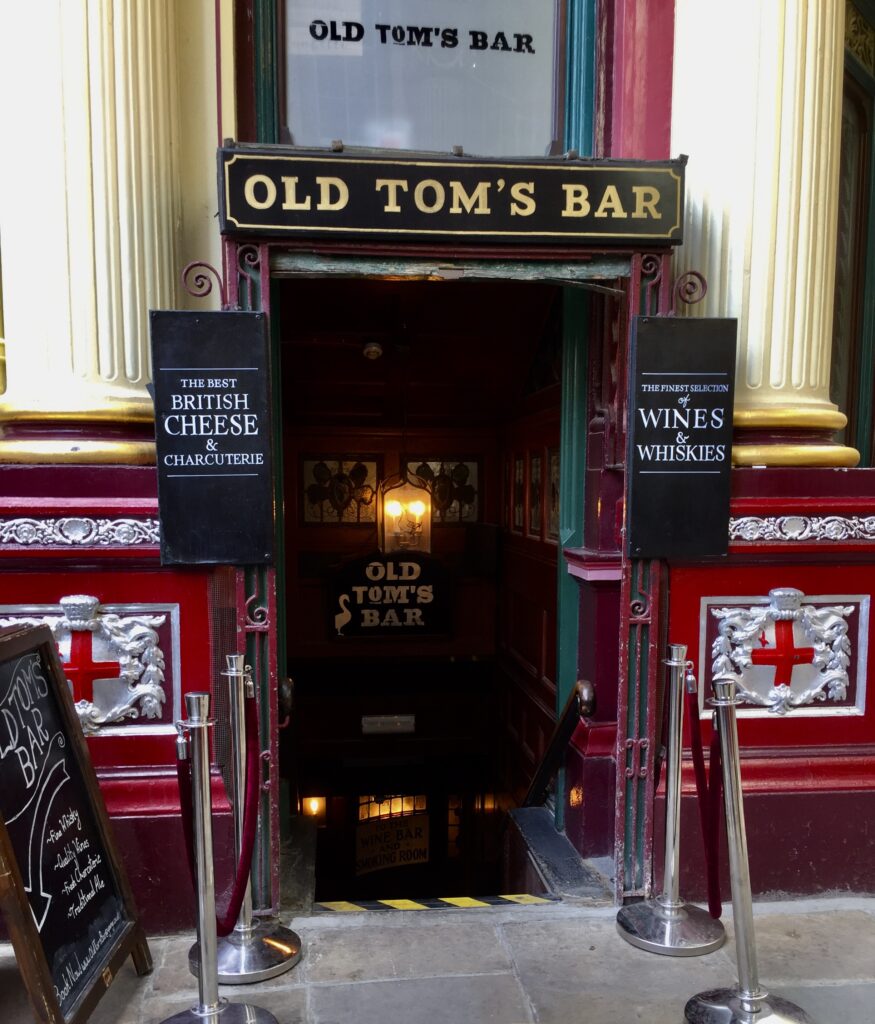
It commemorates the famous goose Old Tom. During the early 19th Century one of the most celebrated characters in the Market was Old Tom, a gander from Ostend who came to England by chance, due to his fascination with one of the lady members of his flock. It is recorded that over two consecutive days 34,000 geese were slaughtered in the Market – but Old Tom managed to escape execution. He became a great favourite in the Market and was a regular customer at the local inns where he was fed titbits. So famous was he that his obituary appeared in The Times on 19th March 1835, giving his age as 37 years, 9 months and 6 days.
The market in 1890 …
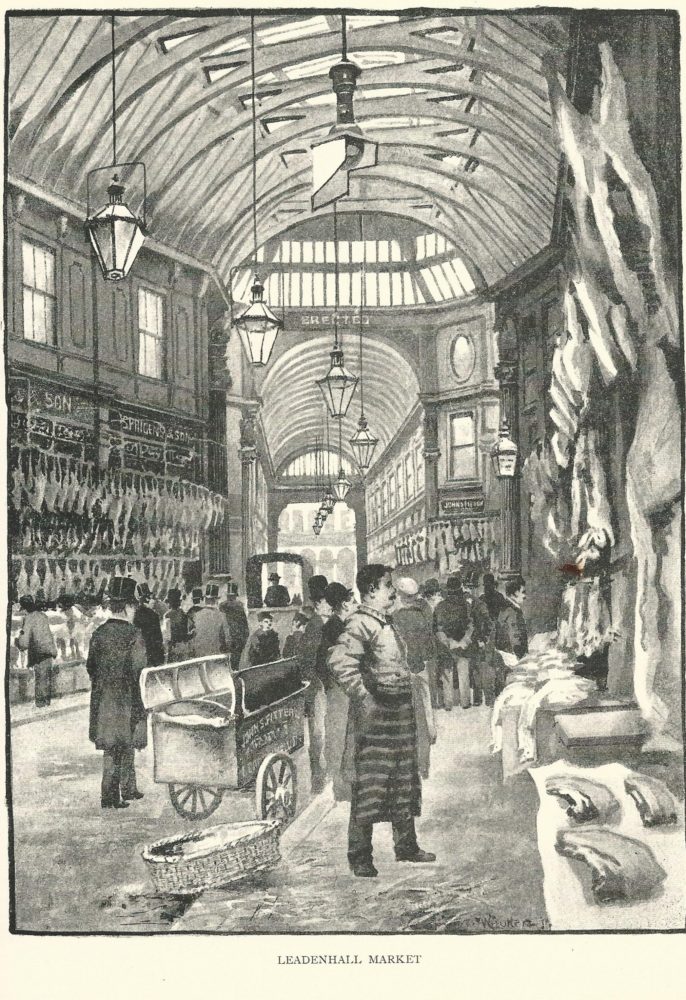
And in the 1960s. It looks like people are shopping for their traditional Christmas turkey or goose …
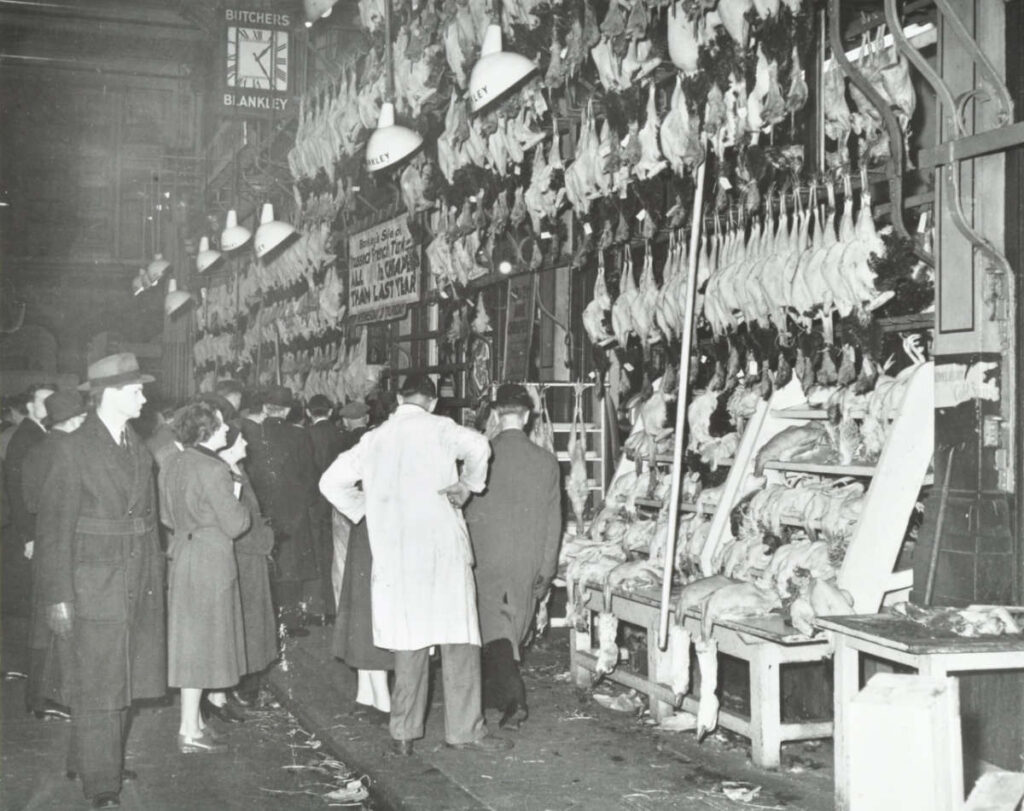
The hooks that produce was hung from are still there …
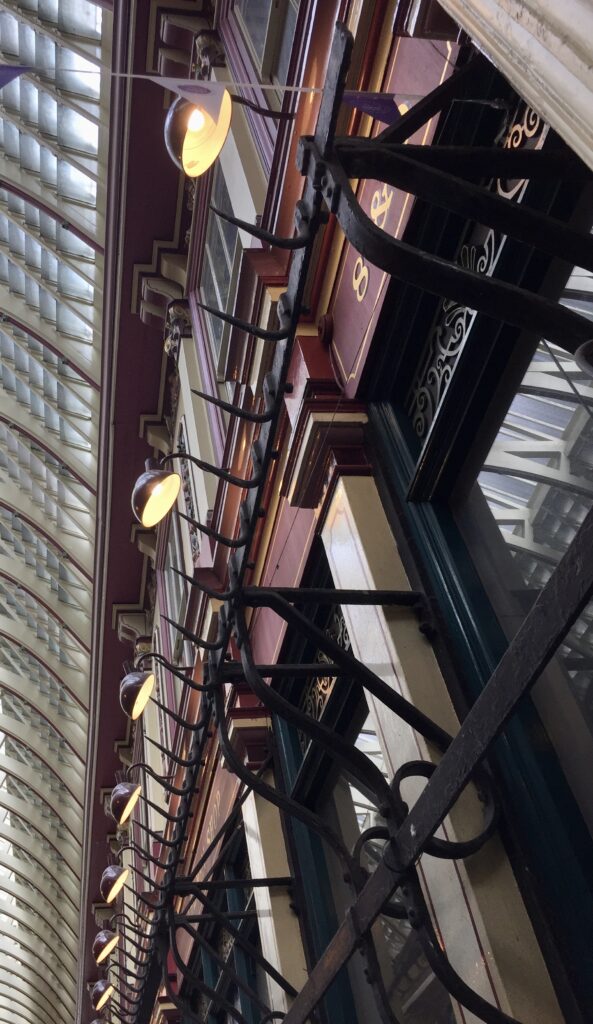
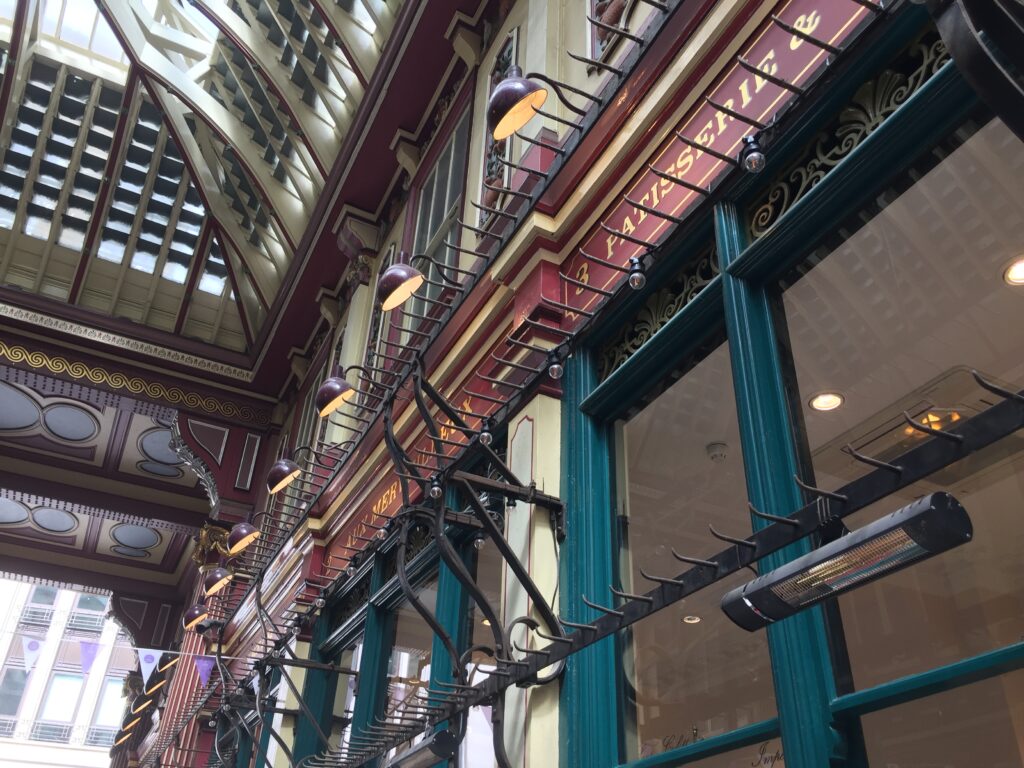
And now for some items of interest that not everyone is aware of.
Check out the Lamb Tavern and these these splendid tiles depicting Sir Christopher Wren. He is standing in front of The Monument (which still has scaffolding around it) holding up a drawing of how it will look when finished …
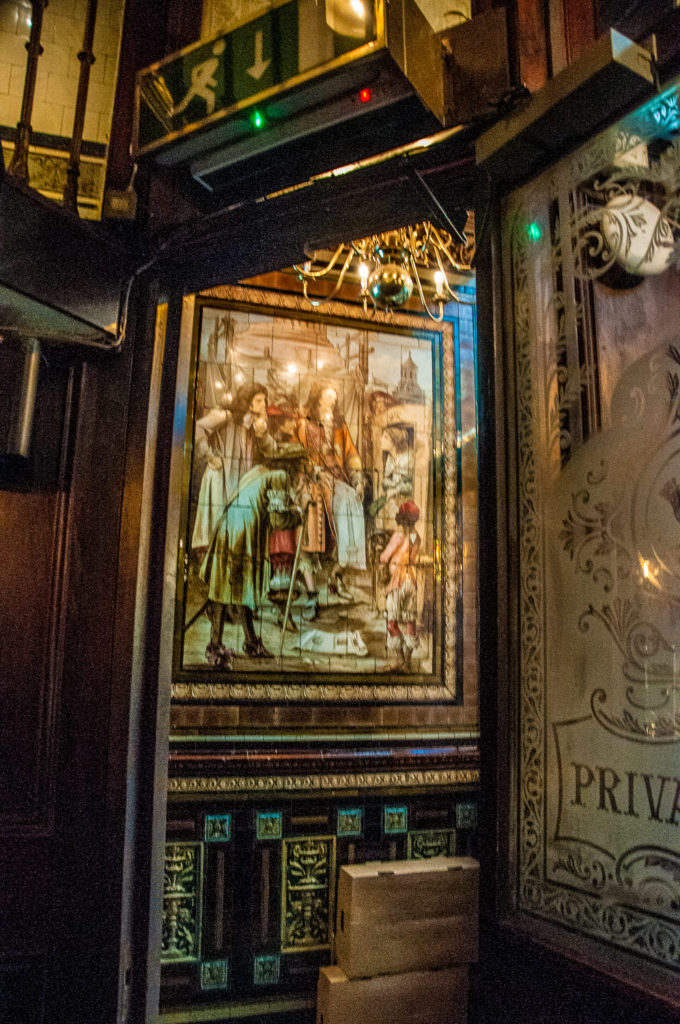
Just look at the characters gathered around him …
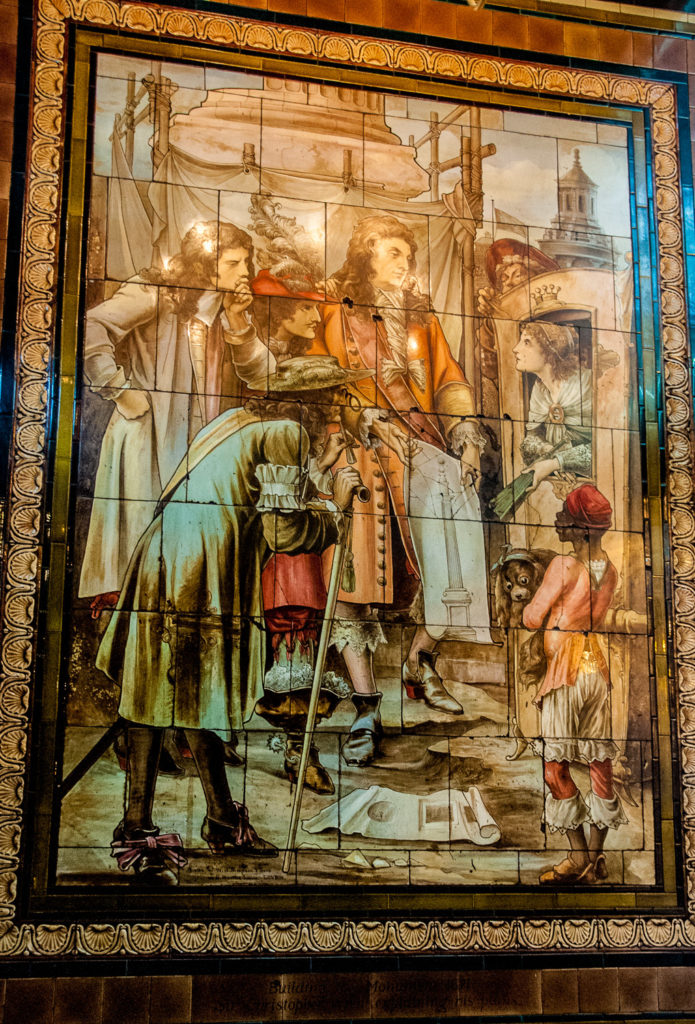
A lady holding a fan leans out of her carriage window to chat to the architect. A child (possibly her servant) stands nearby holding what looks like a pet King Charles spaniel. Some nearby gentlemen are also intrigued, but the chap with the red hat who looks like Errol Flynn might be more interested in the lady. Observe the elegant shoes of the man holding an eyeglass. Not really appropriate for the City’s muddy streets, so maybe he is her carriage companion. The carriage driver looks over his shoulder at the scene. The panel is by W.B. Simpson & Sons and is faintly dated 12th March 1882.
The pub also boasts some nice traditional glass …
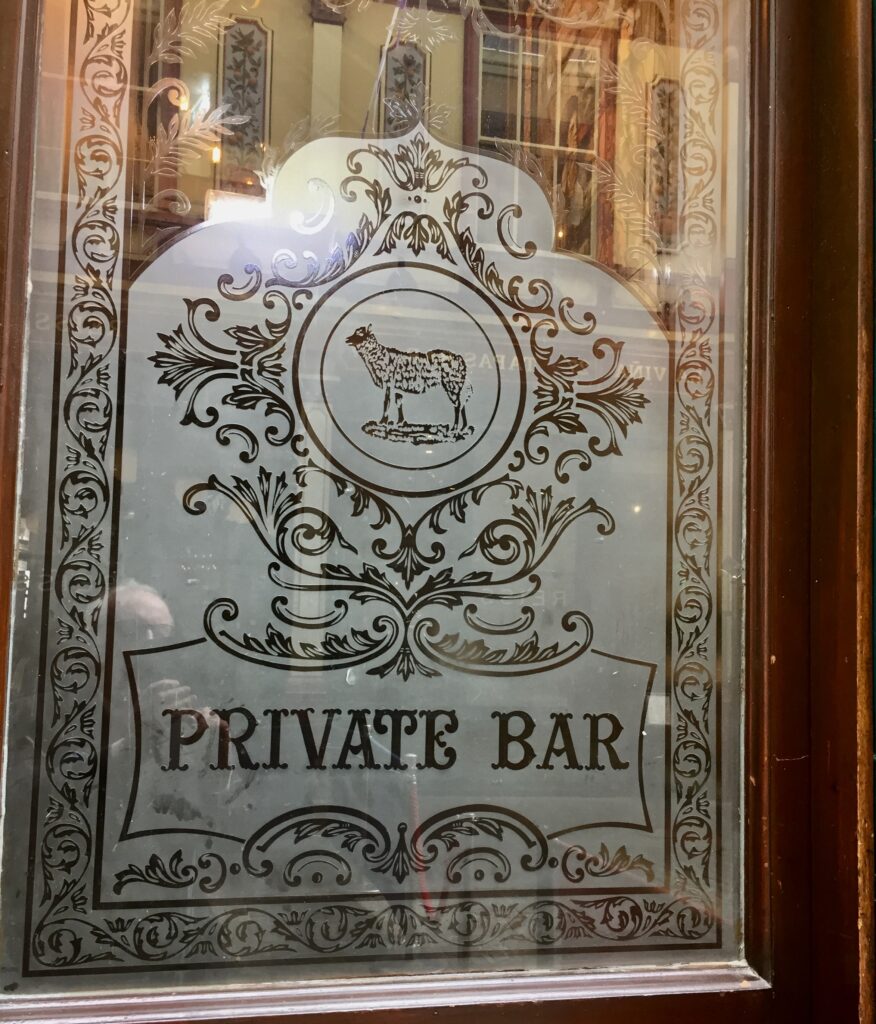
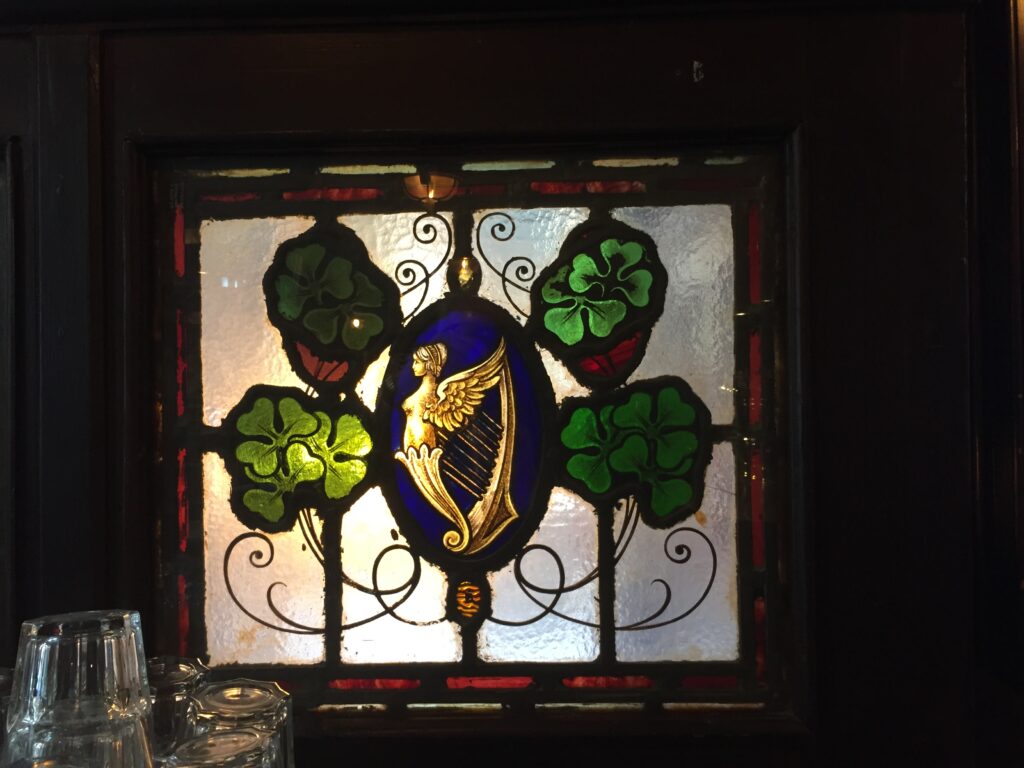
Part of Harry Potter and the Philosopher’s Stone (the first film in the blockbuster series) was filmed in Leadenhall in 2000/2001. The Market was used to represent the area of London leading to the popular wizarding pub The Leaky Cauldron and was the inspiration for the magical shopping street Diagon Alley. Here, in a later film, Hadrig leads Harry through the pub door …
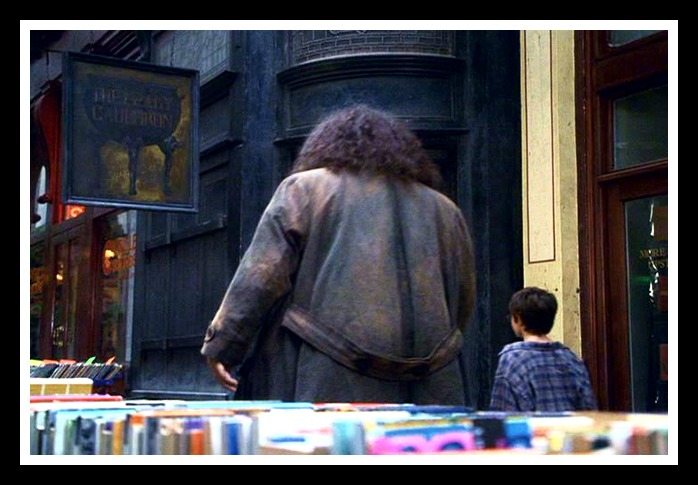
And here it is at 42 Bull’s Head Passage (EC3V 1LU) …
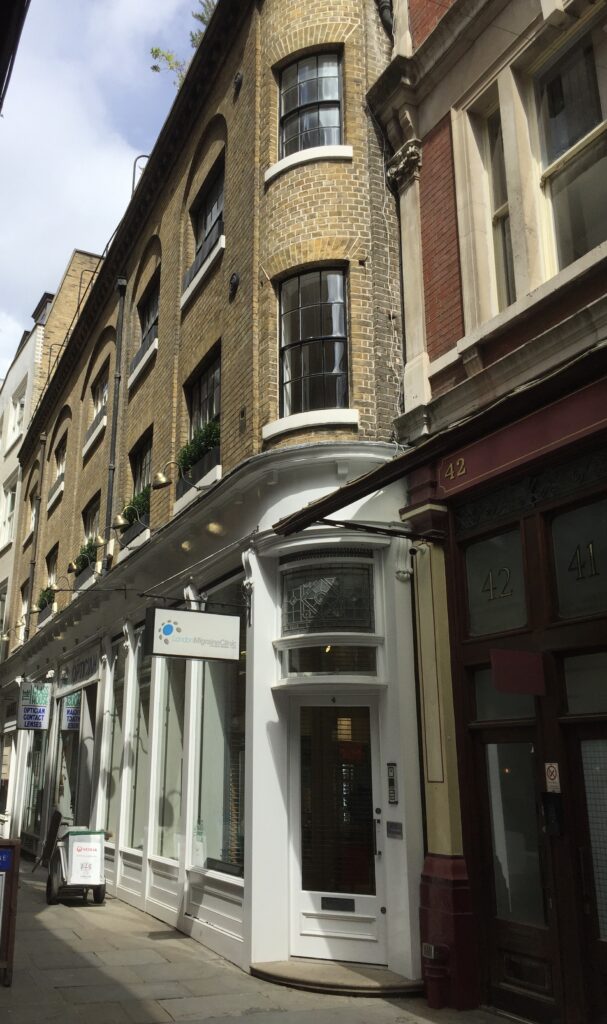
Finally, very often when I have visited the market I have noticed the shoe-shine men …
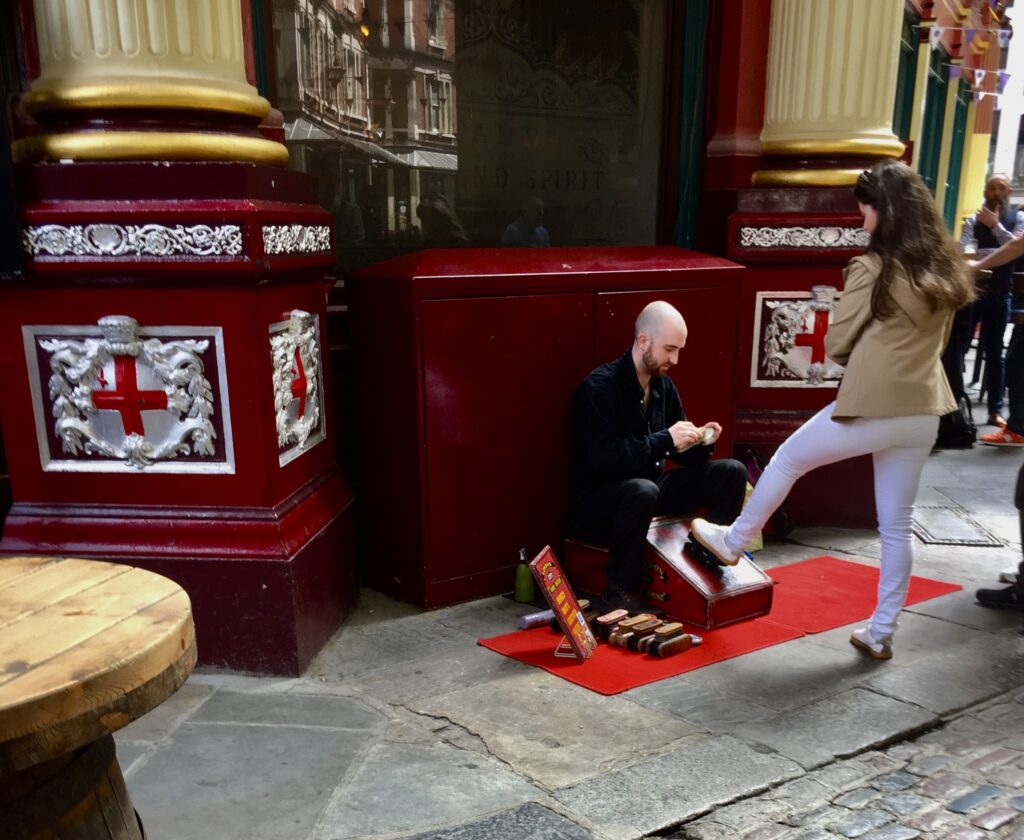
Read more about them here in the Spitalfields Life blog.
If you would like to follow me on Instagram here is the link …
